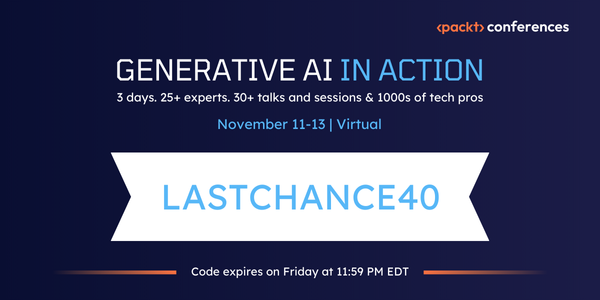Welcome to DataPro #114 – Your Weekly Data Science & MLWizardry!🌟
Stay ahead in the fast-paced world of AI and ML with the latest insights, strategies, and game-changing tools. This week, we’re bringing you top picks fromtrending data resources to supercharge your projects, boost accuracy, and optimize performance. Ready to level up? Let’s dive in!
🔍 Algorithm Spotlight: This Week’s Standout Models
✦ MaskLLM: Streamlining LLM Sparsity Training for Big Datasets
✦ Prithvi WxC: IBM & NASA’s 2.3B Parameter Model for Weather & Climate
✦ LightLLM: High-Speed Python Framework for LLM Inference
✦ CopilotKit CoAgents: Simplifying Human-AI Collaboration
✦ Blockwise Parallel Decoding (BCD): KAIST & Google’s AI Breakthrough for Faster Language Models
🚀 Tech Trends on the Rise
✦ Efficient Knowledge Management: How Notion Powers Data Teams
✦ Llama 3.2 Locally: Your Quick Start Guide
✦ Data Formulator: AI-Powered Visualizations for Analysts
✦ RadEdit: Stress-Test Biomedical Vision Models with Synthetic Data
✦ OpenAI's Realtime API: Speed Meets Smarts
✦ Verdi by Mercado Libre: AI Development Platform Powered by GPT-4o
🛠️ Platform Showdown: Must-Try ML Tools & Services
✦ Moving Averages with NumPy: Quick How-To
✦ Llamafactory Setup: Installation Made Easy
✦ ChatGPT for Translation: Bridging Language Gaps in Minnesota
✦ Reinforcement Learning: Optimizing Inventory Management with Python
✦ AI Agents: Rethinking Autonomy
✦ Conversational AI: Solving the Data Democratization Puzzle
📊 Real-World Wins: ML Success Stories
✦ MALPOLON: AI for Species Distribution Modeling with Deep Learning
✦ AMD-135M: AMD's First LLM Series Trained with 670B Tokens
✦ MassiveDS: A 1.4 Trillion-Token Datastore for NLP Excellence
✦ Vertex AI Prompt Optimizer: Boost Your Generative AI Solutions
🌍 ML Newsflash: Industry Breakthroughs & Discoveries
✦ Ovis-1.6: Aligning Visual and Textual Embeddings
✦ Logic-of-Thought: Enhancing Reasoning in LLMs
✦ Instructive Decoding (ID): Boosting Focus in Instruction-Tuned LLMs
✦ NotebookLM: Now with Audio & YouTube Integration
✦ Google FRAMES: New Dataset for Testing RAG Applications
That’s all for this week’s data-driven insights!
Unlock access to the largest independent learning library in Tech for FREE!
Get unlimited access to 7500+ expert-authored eBooks and video courses covering every tech area you can think of.
Renews at $15.99/month. Cancel anytime
 United States
United States
 Great Britain
Great Britain
 India
India
 Germany
Germany
 France
France
 Canada
Canada
 Russia
Russia
 Spain
Spain
 Brazil
Brazil
 Australia
Australia
 South Africa
South Africa
 Thailand
Thailand
 Ukraine
Ukraine
 Switzerland
Switzerland
 Slovakia
Slovakia
 Luxembourg
Luxembourg
 Hungary
Hungary
 Romania
Romania
 Denmark
Denmark
 Ireland
Ireland
 Estonia
Estonia
 Belgium
Belgium
 Italy
Italy
 Finland
Finland
 Cyprus
Cyprus
 Lithuania
Lithuania
 Latvia
Latvia
 Malta
Malta
 Netherlands
Netherlands
 Portugal
Portugal
 Slovenia
Slovenia
 Sweden
Sweden
 Argentina
Argentina
 Colombia
Colombia
 Ecuador
Ecuador
 Indonesia
Indonesia
 Mexico
Mexico
 New Zealand
New Zealand
 Norway
Norway
 South Korea
South Korea
 Taiwan
Taiwan
 Turkey
Turkey
 Czechia
Czechia
 Austria
Austria
 Greece
Greece
 Isle of Man
Isle of Man
 Bulgaria
Bulgaria
 Japan
Japan
 Philippines
Philippines
 Poland
Poland
 Singapore
Singapore
 Egypt
Egypt
 Chile
Chile
 Malaysia
Malaysia

















